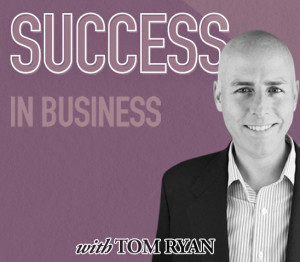 If you want to your business succeed, you really have to know who your customers are — and what they want. Creating a great company isn’t just about having a brilliant idea for a product or service. It’s also about delivering something that people not only need, but also something that they are willing to pay for.
If you want to your business succeed, you really have to know who your customers are — and what they want. Creating a great company isn’t just about having a brilliant idea for a product or service. It’s also about delivering something that people not only need, but also something that they are willing to pay for.
No matter how astonishing your business concept is, it will be dead in the water if it can’t connect to customers. Often, the difference between a success and a flop isn’t some huge gulf in how a product works or a service is priced. The thing that usually tips the scale is how well that product fits the needs of the customer.
How do you know if what your company provides is a good fit? You need to talk to the very people that best represent your eventual customers. Here are five proven tips for identifying and connecting with your prospective customers.
1. Go out and ask them. Sometimes, the best strategy is the simplest one. There is no better way to know what your prospective customers are thinking than to hit the pavement and talk to them. You probably have at least a rough idea who your potential customers are, so finding them and getting their feedback is largely just a matter of contacting them. This could mean talking to them directly by calling them up, emailing them or holding an event, or it could mean taking a more indirect route like sending out surveys. Even contacting people through a site like LinkedIn can be incredibly helpful.
2. Understand what they honestly think of your company, and your products or services. Don’t get blinded by your own creation. No one is as enamored as your products or services as you are. As an entrepreneur, you’re thinking about those things that you’re bringing to the market all the time. But that doesn’t mean you have all the answers, or that your customers feel the same way about your solutions that you do. Getting outside of your own mind and talking to a variety of people about how your product or service fits into their needs will go a long way towards helping you understand what your customers actually want.
3. Never rely on your imagination. One of my biggest pet peeves is when someone says “I can’t imagine our customers would want …” Are you really willing to risk your business on your imagination? You can’t depend on your own thoughts, beliefs, concepts and assumptions. Even if you have a good feel for the market, it’s always better to get real information from real customers. Trust your instincts, but always verify and validate them with proof directly from the market. There’s nothing worse for a startup than going out into the market armed with a bunch of inaccurate assumptions.
4. Give them a reason to participate. The most insightful people are often the most protective of their time and their opinions. To get them to open up, you often need to provide them with some kind of incentive. This doesn’t have to be money or some kind of gift, it can be something as simple as praise or recognition. Approaching them as an expert whose feedback you genuinely value may be enough for them to decide to participate. If you’re at a loss for the right level of incentive, think about what it would take for you to participate in the same situation.
5. Take reasonable action from their feedback. If you’re successful in getting great feedback, make sure that you leave those participants feeling like their time was well spent. To best way to do that is to keep them posted on how their insights have helped inform your decisions. There’s nothing better for an expert than to hear how their perspective helped to shape a product or service, because it gives them a sense of ownership of the result.
Getting the customer feedback you asked for doesn’t mean that all those insights will be equally valuable. Take the feedback you get with a grain of salt. Some of the opinions you receive won’t be all that helpful, and some of the ideas you get won’t be feasible. That said, it’s always a good practice to follow up and thank everyone who participated as a recognition of the time they gave you.
